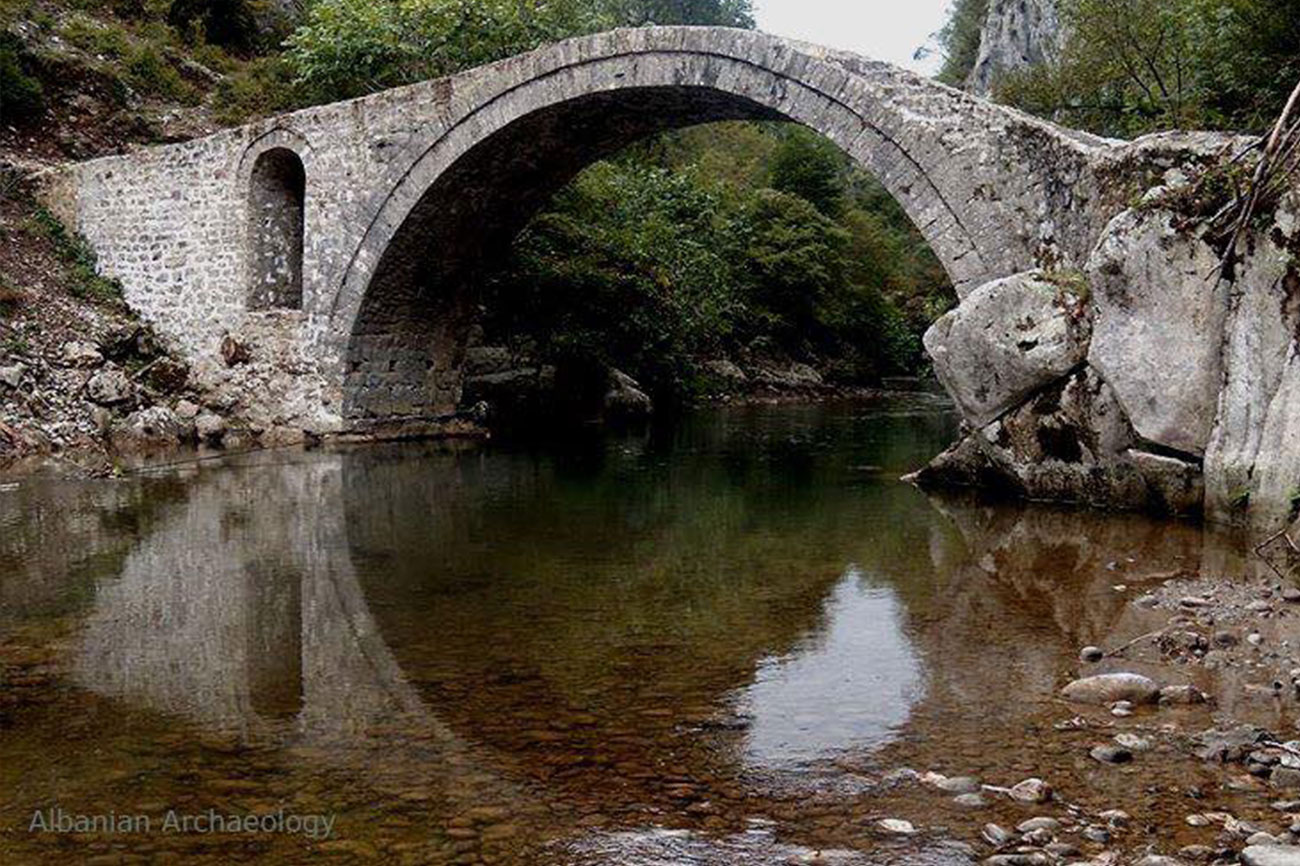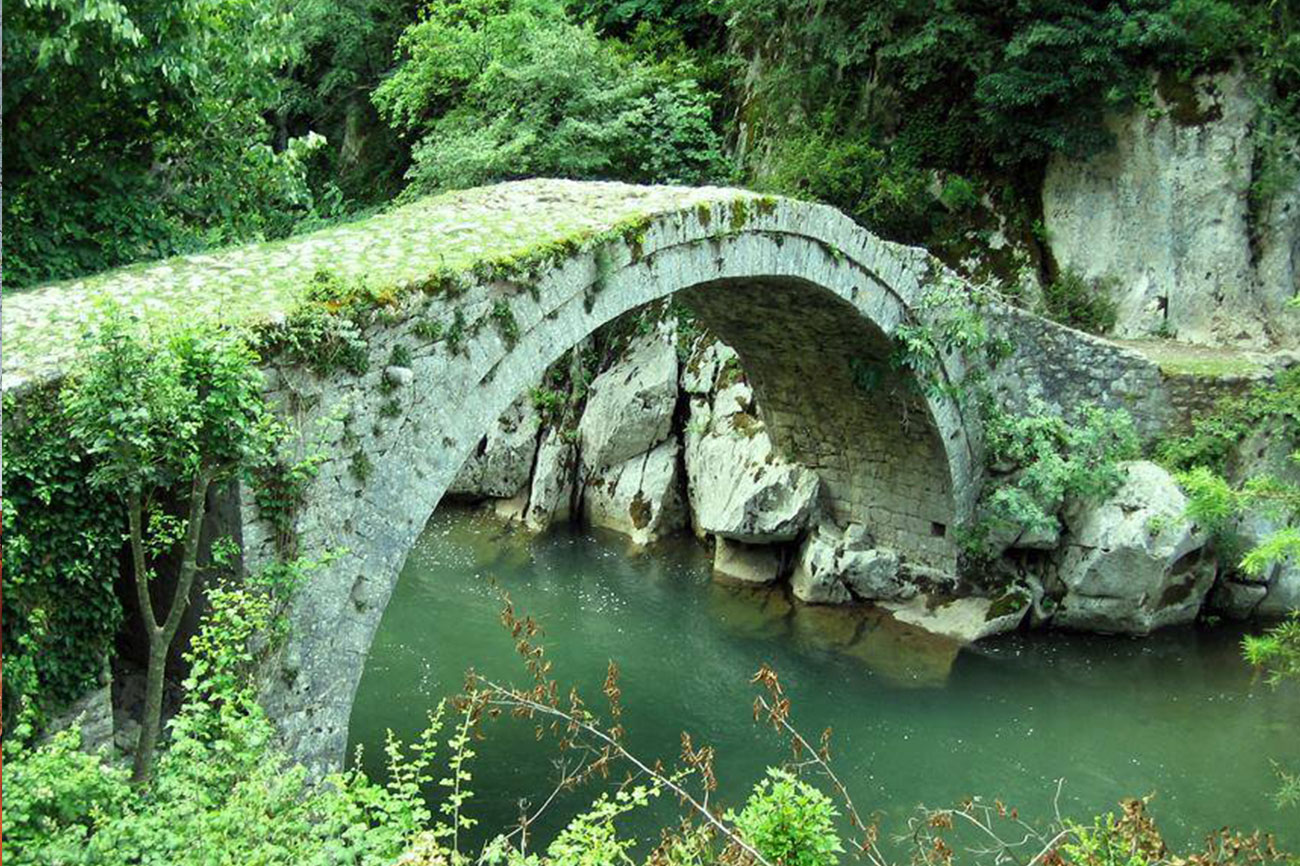The girl’s bridge
“Vasha Bridge” is located between the villages of Klos and Guri i Bardhë. It connects the two banks of the Mat River and has been the only means of communication in the upper reaches of the Mat River. The bridge has an arch and on the right side of the stream there is a discharge window. Her legs are set on Mount Vërrith and Mount Dish.
It is 11 m long, the light space between the two legs is 7 m and the height of the arch from the water mirror is 7 m. The width of the bridge route is 2. 8 m and is paved with stones and slabs. Its arch is semi-circular and is made of hewn and squared limestone and double-vaulted. Both sides of the arches are reinforced with iron hooks.
On the right side of the rock, when it comes from the White Stone, you can see the traces of the place where a dedication was fixed, which was about the builders and the time of its construction. This bridge has carried on its shoulders the whole burden of the road caravans to Debar, which connected it with the coast from where salt and other products were obtained.
“Vasha Bridge” did not have this name. It was called “Skura Bridge” and was built as a charity work by Haxhi Hajrulla Skura from the “Mansaj” neighborhood of Guri i Bardhë, approximately 300 years ago. It is named “Vasha Bridge” which is located not far from it, in Sheun e Dishit and today is called “Skura Bridge”. Being more important and the name “Vasha Bridge” more symbolic, has adopted this name, being recognized as such in the mouths of passers-by.
Comparing with other bridges of Mati, “Ura e Vashës”, technically and typologically, coincides with the bridge of “Hoxhaj”, “Kulmares”, “Skura” in Gur i Bardhë and “Shën e Premtes” in Gurrë i Vogël . Outside Mat, however, it resembles the second phase of the addition to the “Middle Bridge” in Shkodra and the “Bridge of the Camares” in Librazhd, which are known when they were built; The “Middle Bridge” was built by Mehmet Pasha Bushati in the 15th century. XVIII, and the “Bridge of Camares” had a dedication dating back to 1715.
The Vasha Bridge is visited by many Albanian and foreign tourists, and even a small sign that reads “Vasha Bridge” has been placed by Czech tourists. The natural beauties and historical values of this area are completely unknown to many Albanians, no longer to foreigners. But with the construction of the Arbri road, tourists are expected to increase. Along this road there are characteristic stone houses, with small windows called turrets.
Ali Sina’s family is the only family living at the end of the two slopes, a working-class family that maintains the road itself, and the Vasha Bridge.
Legend has it that it got its name from the fact that a family from the Skuraj tribe, who lived in Gur i Bardhë, had only one daughter, who did not marry because she could not cross the river. One day the girl decided to build the bridge with her income.



